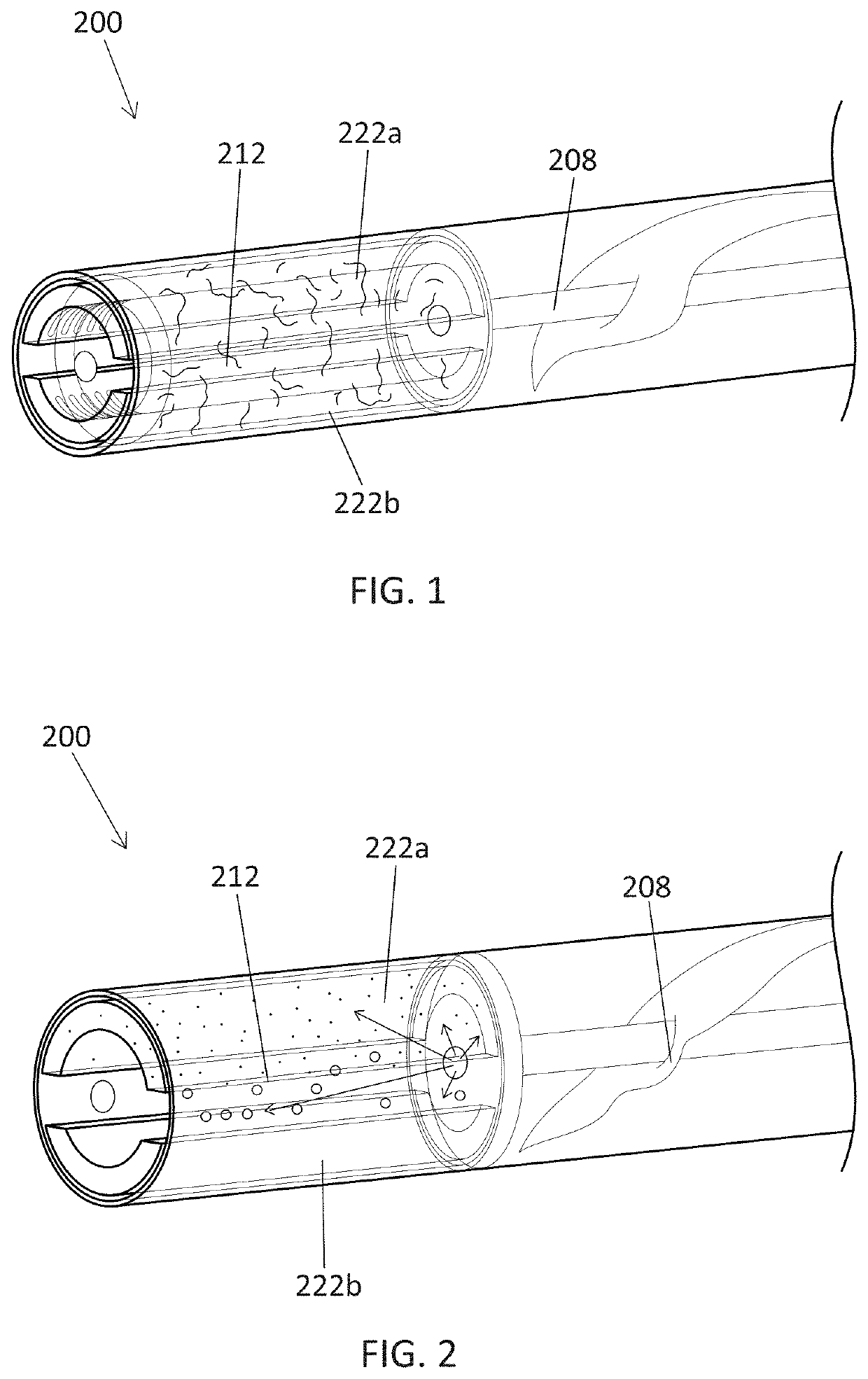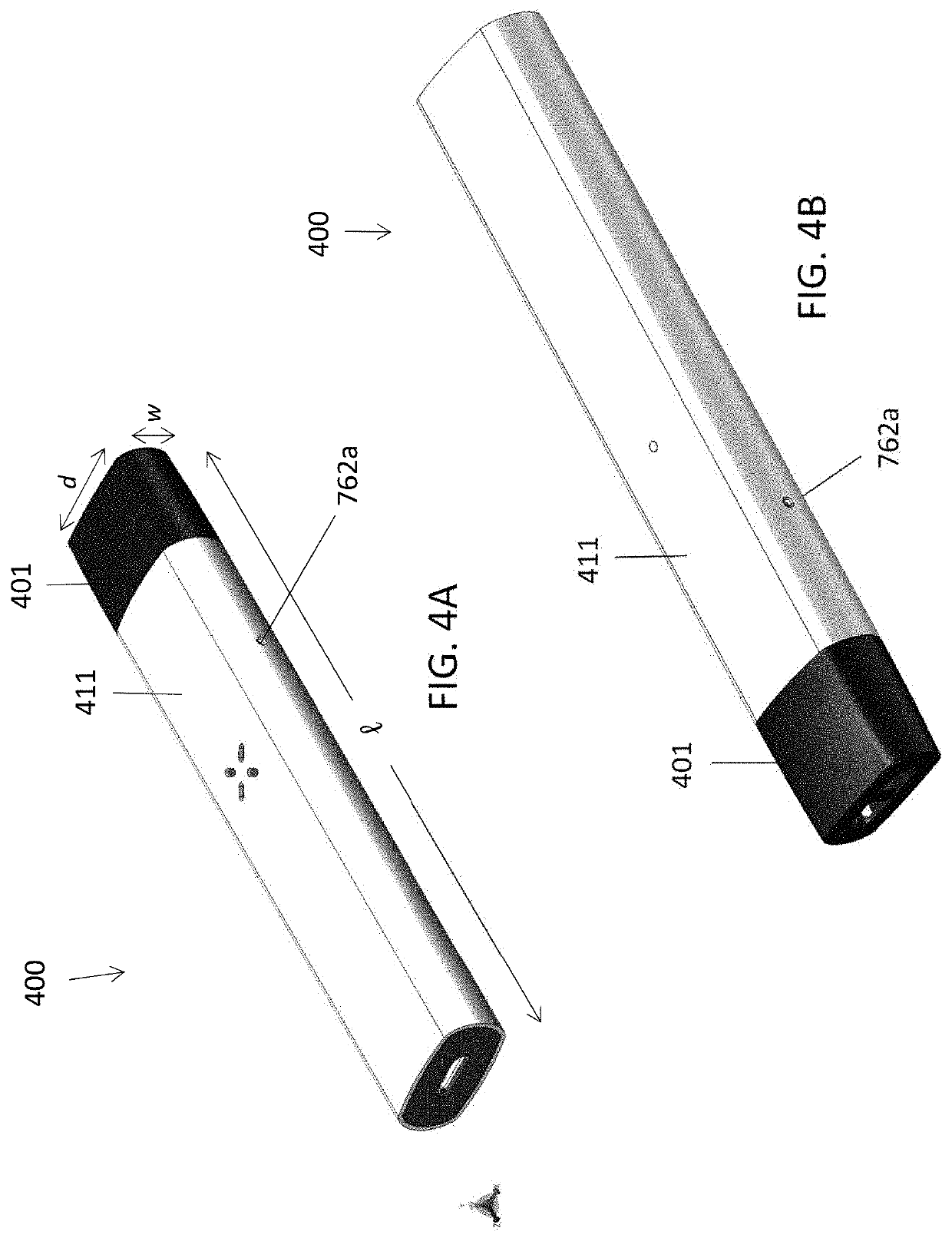Leak-resistant vaporizer device
a vaporizer and leak-resistant technology, applied in the field of vaporizer equipment, can solve the problems of clogging the device, disturbing the electrical components, and a more serious consideration and challenge for leakag
- Summary
- Abstract
- Description
- Claims
- Application Information
AI Technical Summary
Benefits of technology
Problems solved by technology
Method used
Image
Examples
Embodiment Construction
[0071]The apparatuses and methods described herein generally include forming a vapor from a material (including in particular, liquid and oil-type plant materials) using a vaporization device. The vapor may be delivered for inhalation by a user. These apparatuses may be particularly adapted for use with an oil-based vaporizable material, including cannabis oils.
[0072]The vaporizer apparatuses, including cartridges (vaporizer cartridges) and reusable vaporizers bases described herein may be used with any appropriate vaporizable material, including aqueous vaporizable materials. These apparatuses may be particularly well adapted for use with viscous, oil-based vaporizable materials, including cannabis oils. For example, any of the cartridges described herein may be used (e.g., filled) with a vaporizable material comprising viscous liquid such as a cannabis oil. In some variations the cannabis oil comprises between 40-100% cannabis oil extract. The viscous oil may include a carrier for...
PUM
 Login to View More
Login to View More Abstract
Description
Claims
Application Information
 Login to View More
Login to View More - R&D
- Intellectual Property
- Life Sciences
- Materials
- Tech Scout
- Unparalleled Data Quality
- Higher Quality Content
- 60% Fewer Hallucinations
Browse by: Latest US Patents, China's latest patents, Technical Efficacy Thesaurus, Application Domain, Technology Topic, Popular Technical Reports.
© 2025 PatSnap. All rights reserved.Legal|Privacy policy|Modern Slavery Act Transparency Statement|Sitemap|About US| Contact US: help@patsnap.com



